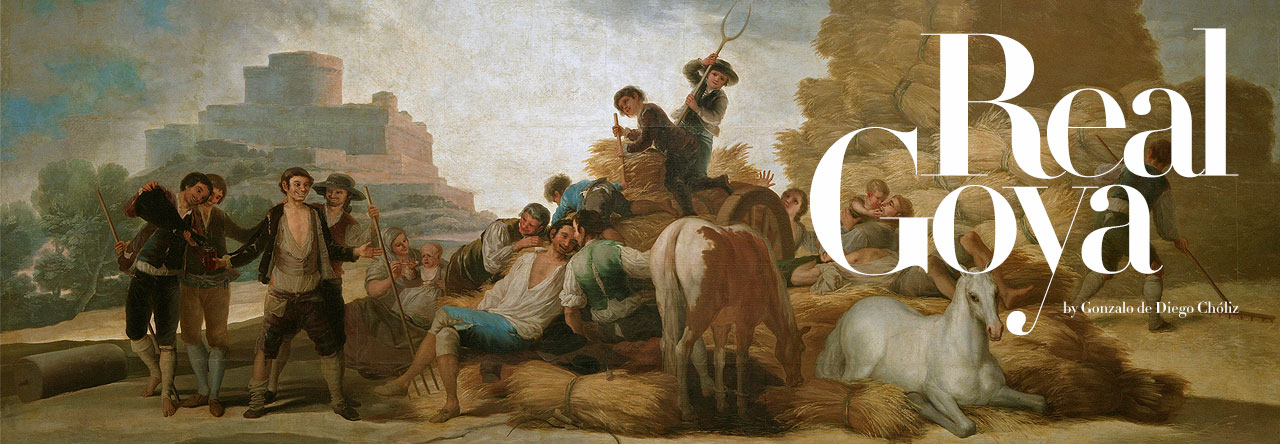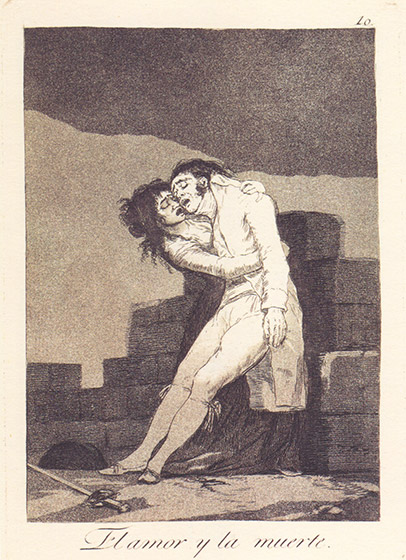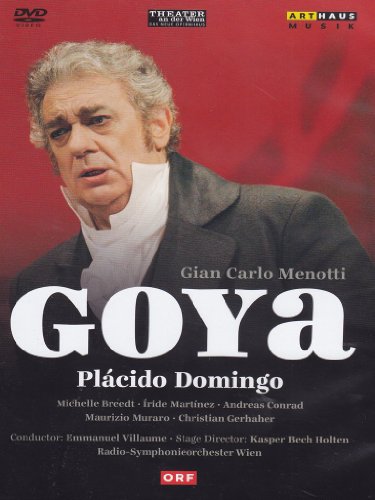Goya in literature 6
Goya and the music again. This time it’s a tribute in his centenary year to Maestro Enrique Granados and his work Goyescas, inspired in the figure of Don Francisco de Goya.
Enrique Granados y Campiña was born in Lerida on 27 July 1867. Fond of music since childhood, he began piano studies first with José Junceda and already in Barcelona, at the age of twelve, the master Pujol. In 1887 he goes to Paris where he continued his studies for two years under the direction of maestro Charles de Beriot. In 1889 he returned to Barcelona dedicating himself to the composition and the teaching of piano, becoming an important personality in the catalan art scene and founding in 1901 the Granados Academy, artistic focus of enormous influence whose line was then extended with figures like Rosa Sabater and Alicia de Larrocha.
Gifted with exquisite sensitivity and an unsurpassed elegance of ideas, his productions bear an unmistakable hallmark of grace, spontaneity and depth of feelings, especially in those of his works inspired by Spanish popular rhythms and melodic turns.
Goyescas, works for piano, was presented on 11 March 1911 at the Palau de la Música catalana. The musician is inspired by the figure of Don Francisco de Goya, the painter of the nobility in their classrooms and aristocratic circles; Portrait of monarchs and actresses of farandulas; governors and valid; people joying in countryside environments; majos and majas lovers and gentles; intellectuals and philosophers of the enlightenment period; the traditional sphere and palace poses… And above all, Goya creator of the “Whims”, “Nonsense”, “Disasters of War” and the “Black Paintings”.
Truly goyesco musical themes are popular, in reference to tapestries and fabrics in which the instruments deployed its sound outdoor: “Dancing on the banks of the Manzanares”, “The blind man with the guitar”. We will now cite the words of master Granados on his work:
“I’ve had the joy of finding something great. The “Goyescas”, “Los majos enamorados” already carry much treaded. On their way along the path of truth, a portion of reptiles have been striking in the frog closures of the goyescas garments. Thanks to these creatures so low I’m perfecting me. I served as a point of comparison and without any effort I feel raise – me on them. Forgive”. “Goyescas is a work forever. At this point I am convinced”. “I have composed a collection of “Goyescas” of great flight and difficulty. They are my efforts to arrive. They say that I have arrived. I fell in love with the psychology of Goya; of his palette. He and the Duchess of Alba; its maja (nice) lady, of their models, their quarrels, loves and flattery. That white pink cheeks contrasting with lace and black velvet with frog closures; those bodies of rippling waists, hands of mother-of-Pearl and Jasmine guest houses on azabaches, they have upset me…”.
Goyescas El Pelele is distributed in two books and an independent El Pelele number. The titles are as follows: Los Requiebros, Coloquio en la Reja, Fandango de Candil, Quejas (Complaints), or La Maja y el Ruiseñor (The Maja and the Nightingale), El amor y la Muerte (Love and Death) and El Epílogo (Serenata del Espectro) (the Epilogue (Serenade of the Spectrum)).
The first part opens with Los Requiebros, of great technical importance. It’s a Jota, where rhythms are interspersed with projecting a fantasy and colourful. It is a display of the best contrapuntismo, bright to the peak. The large number of ornaments and ornamentation (trills, mordents, arabesques) suggest teachers such as Scarlatti, Padre Soler and Mateo Albéniz.
It contrasts the Coloquio en la reja, inspired by love and tragedy environment. Magnificent score in which triumph two aspects equally: the instrumental and vocal. It’s required to the interpreter a special sweetness to address these staves full of charm, more spirited, melancholy and sensuality… The master’s own indications make us reflect: “all the basses imitating the guitar”, “ternezza”, “legatto in bass notes” and especially reins “rubato”. We refer to the typically Spanish ‘rubato’, difficult in proportions, elegant but daring.
We are presented with the Fandango de Candil, based on the tune of the Currutacas modestas, as rhythmic dance full of harmonic wealth. The piano is twinned with the guitar, being always faithful to the elegance and consubstantial refinements in Granados. A beautiful melody expressive singing it sandwiched in the middle. The triplet clouds the rhythmic design of the piece, recalling the castanet soniquete.
Quejas, or La Maja y el Ruiseñor, is the most popular and perhaps the most inspired of all fragments. The numerous trills allow hear edges of the maja and the bird. The prevailing romanticism in the entire piece, leaves show through the great passionate tension. It can be considered true gem of the piano repertoire, for its high quality in the preparation and the way. We remember for their adequate interpretation a few indications of the own Granados: “with jealousy of women, not with sadness of the widow”.
10. EL AMOR Y LA MUERTE
CAPRICHO
AGUAFUERTE, AGUATINTA BRUÑIDA Y BURIL
219 X 152 MM.
Granados begins the second part of this collection inspired by the tremendous dialectic love/death, present in the Caprichos of Goya (the title of the number 10 is precisely Love and Death). Perhaps what most surprises us in these pages is the simplicity of form and so little ornate writing. However, the effects are employees with the best taste in the compilation of themes already previously used, extracted parts as discussed in this series. The point is that one in which the subject of the maja takes a painful accent. The indication is significant: “Very expressive and as happiness in pain”.
Finally, it appears the epilogue that encloses the Serenade of the Spectrum that forwards to the feverish fantasy of the last Goya. It is a mysterious “allegretto”, of ghostly intent in the verse. A pure-blooded, tonadillesco, skeletal, spectrum disappears to tuning the strings of his guitar…
Another admirable Goya stamp of Granados is El Pelele, works best as isolated piece that culmination of Goyescas, since his style breaks that soft and dramatic line of which we have spoken. Again shines the Tonadilla, and virtuosity and technical display here take the reins of this page full of bravery, brio and lighting effect that makes the clearest exponent of the maturity of a Granados consolidated.
This previous experience, leads to the composer, in collaboration with his friend and famous writer Fernando Periquet, to compose an opera that take advantage of the same musical material of the piano series, and whose libretto was also chaired by a goyesco environment. According to statements of Periquet and Granados, the main couple is inspired by the own Goya and the Duchess of Alba; Paquiro, bullfighter, is the Martincho that Goya painted in several sequences of La Tauromaquia, and Captain adheres to a character from the series Los Caprichos.
The premiere of the opera Goyescas, intended at first to the Opera of Paris, which was cancelled because of the war, premiered in New York on 28 January 1916 with great success, attended by expressly master Granados accompanied by his wife. There, a few days earlier, and only stepping in to fill a change of scene, was born the «Intermezzo», which was applauded development and had its own independent history as brilliant concert piece. Opera in three pictures ended however, as an unusual and exquisite guest of scenarios, even in their country.
When they returned to Spain, the boat they were travelling was torpe bombed by a German torpedo thus ending this intense creative life on 24 March 1916.
It only remains to sit down and listen to the music of Granados, pure pleasure.
(notes from Internet:)
. Enrique Granados, Goyescas. “Quejas o la maja y el ruiseñor“.
. The treasures of the library.
. Goyescas of Enrique Granados: Goya and Granados in unison).
Discography
Columbia 1957: directs Ataúlfo Argenta and sing Consuelo Rubio, Ana María Iriarte, Manuel Ausensi and Ginés Torrano.
Audivis Valois 1997?: directs Antoni Ros Marbá and sing María Bayo, Ramón Vargas, Enrique Baquerizo and Lola Casariego.
Silvia Pagliano


